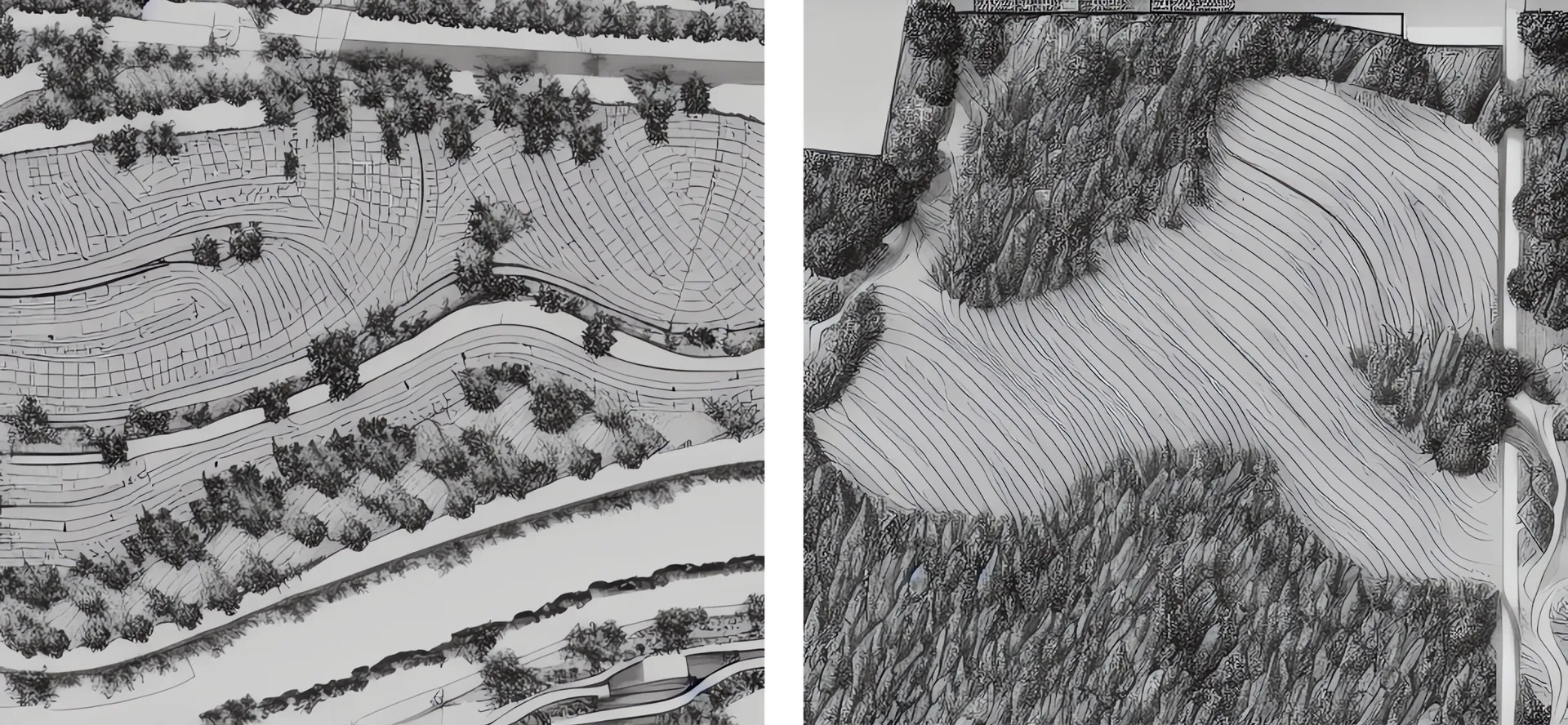I have a piece in May’s issue of Landscape Architecture Australia that considers the present and future impacts of artificial intelligence on design practice. You can read the article online or grab a copy in print.
The article outlines the distinct genesis and uses of recent AI models, as compared to the more tailored and empiric forms of machine learning that landscape architects have explored over the last decade. I then walk through a few stages of the design process where AI models can, or could, act in an assistive manner and highlight examples, such as Hypar, that test what lies beyond the current focus on generative imaging. The conclusion draws from the work of John May and considers how the potential of AI-driven tools (unlike design computation) might create a more substantive push towards digital practices that give primacy to data over orthography.
Figure .
Figure . An image cut from the as-published article, illustrating the ability of an AI model to emulate the style and features of a landscape plan while being unable to internalise the role of contour lines as registers of landform. Images produced by Stable Diffusion v2.1.

